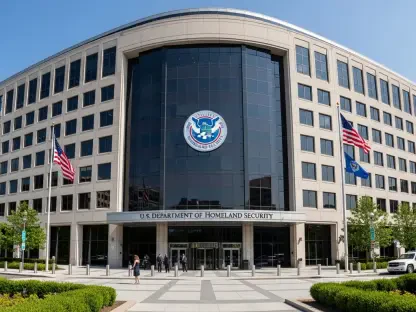In recent years, Canadian tourism in the United States has experienced a significant decline, prompting the need for innovative policy solutions to address this issue. One such proposal currently on the table is a legislative bill aimed at increasing the duration Canadians can stay in the U.S. without a visa. The initiative primarily focuses on accommodating Canadian snowbirds—those who migrate south to warmer U.S. states during the colder months in Canada. The potential economic benefits of this plan are substantial, offering a fresh avenue to boost tourism and invigorate local economies in areas heavily reliant on visitors.
Understanding the Visa-Free Bill Proposal
The Legislative Plan and Its Origins
The newly proposed bill seeks to extend the period Canadians aged 50 and older can stay in the United States without a visa from 180 days to 240 days. At the heart of this plan is an effort to strengthen economic relations between Canada and the U.S. and to encourage increased tourism from the north. The legislative movement is spearheaded by U.S. representatives who recognize the vital contributions that Canadian travelers make to the economic well-being of several tourism-centric states. These states benefit considerably from Canadian visitors who flock to their local economies, particularly during the harsh Canadian winter months.
The proposal’s origins can be traced back to declining travel statistics, which underscored a need for policy that would sustainably reignite cross-border tourism. By acknowledging these realities, the U.S. government appears committed to leveraging long-standing cross-border ties to stimulate industries heavily dependent on tourism. Through such efforts, the bill aims to create a win-win situation for both countries, easing travel restrictions for Canadians while re-energizing U.S. tourism industries with much-needed patronage. The proposal also signifies a strategic pivot in the pursuit of economic growth through improved cross-border interactions.
Motivation Behind the Initiative
The visible drop in Canadian tourists, highlighted by data showing a 13.5% decrease in air travel and a 31.9% reduction in ground transportation, has jolted policymakers into action. These numbers paint a clear picture of dwindling enthusiasm among Canadian travelers and the subsequent economic repercussions this decline has caused. By extending visa-free stays, promoters of the bill hope to make the U.S. a more inviting destination for Canadian tourists, especially during the colder months when snowbirds typically migrate southwards.
This legislative push is grounded in the belief that offering extended stays could revitalize interest among the Canadian demographic that habitually spends considerable time in the United States. The economic rationale is evident: longer stays amount to more spending on accommodation, dining, leisure activities, and other services, thus offering potential relief for states that have witnessed diminishing revenues from tourism. Legislative backers of the bill are optimistic that it could spark a resurgence in cross-border travel, attracting Canadians to play a pivotal role in economic reactivation.
Demographics and Economic Impact
Targeting Canadian Snowbirds
Central to this proposal is the snowbird demographic—composed predominantly of Canadians aged 50 and older. These individuals frequently choose to escape the cold Canadian winters by relocating temporarily to warmer U.S. states. Many among this group maintain a significant presence in the local real estate market through property ownership or leasing arrangements. Historically, they contribute robustly through their spending habits, forming a backbone of tourist economies during times when local tourism might otherwise wane.
The targeted approach of the bill acknowledges the spending power and economic impact of this demographic. By understanding the specific needs and movement patterns of snowbirds, policymakers can tailor legislation that effectively encourages extended visits. Legislative supporters aim to align these needs with opportunities to expand local business in sectors ranging from retail to healthcare. The recognition of Canadian snowbirds as a vital piece of the economic puzzle underlines the importance of crafting policies that retain their interest in seasonal migration.
Economic Benefits for the U.S.
The potential economic benefits of this legislation extend far beyond a mere increase in visitor numbers. States that are heavily reliant on tourism stand to benefit profoundly from the influx of extended-stay Canadian visitors. The anticipated boost comes from various avenues: direct spending in local businesses, fostering job growth, and nourishing community development projects. Canadians who spend longer timeframes in the U.S. typically contribute to sectors such as hospitality, retail, and healthcare, serving as a significant economic engine.
Moreover, with extended visa-free stays, visitors are more inclined to engage with the local culture and invest in long-term relationships with service providers, thereby supporting the stability and growth of local enterprises. This economic engagement is not only beneficial to the states gearing for tourism reactivation but also serves as a crucial strategy to combat potential revenue declines attributed to the current downturn in travel. Proponents of the bill argue that this planned legislative change offers a timely and strategic response, addressing both immediate tourism needs and laying the foundation for future resilience.
Conditions and Restrictions
Criteria for Visa-Free Stays
The proposal sets forth clear conditions to ensure that the extended visa-free stay policy is effective and manageable. Eligibility criteria focus on Canadian citizens who are 50 years or older, with the additional requirement that they maintain a rental or ownership stake in U.S. property. Importantly, this demographic is prohibited from participating in employment or public assistance programs while in the U.S., a preemptive measure aimed at preventing potential exploitation or strain on local resources.
These stipulations are crafted to provide clarity and direction for implementing the policy while reassuring stakeholders about the appropriate and intended use of the extended stay privilege. The construct of these conditions serves as a safeguard, ensuring that this demographic genuinely seeks to benefit from tourism and personal leisure activities rather than alternative motives incongruent with tourism policies. By establishing boundaries and guidelines, the legislative proposal aims to cultivate beneficial interactions that focus on fostering genuine tourist experiences without encroaching on employment or welfare systems.
Addressing Concerns and Limitations
Despite widespread support for easing visa restrictions, several challenges and concerns accompany the proposal. Primarily, the complexity lies in the consistent implementation and enforcement of guidelines surrounding extended stays. Questions remain around monitoring adherence to the outlined criteria and ensuring adequate compliance without imposing undue barriers on travelers. The balance between liberating travel policies to entice tourists and maintaining adequate oversight poses a nuanced challenge for policymakers and implementers alike.
Further, the legislative proposal opens up discussions around the potential socio-economic implications of such a move. Ensuring that the privileges are utilized responsibly entails proactive measures to tackle concerns pertaining to overstays, the impact on local services, and respecting the legislative framework. Although the bill is a direct response to the dip in visitor numbers, the road to its potential adoption highlights the uncertainties and complexities inherent in crafting policies that balance economic ambitions with societal considerations.
Broader Implications and Outlook
Reviving Tourism and Economic Ties
The far-reaching potential of the proposed visa-free bill aligns well with broader aspirations of reviving U.S. tourism and solidifying economic ties with Canada. Given the current decline in travel numbers, re-engaging Canadian visitors could serve as a lifejacket for tourism-reliant states, offering new momentum to their economic prospects. By nurturing and expanding upon Canada-U.S. historical links, the legislation aims to reinforce the trust and collaborative spirit that has traditionally characterized bilateral relations between the two nations.
The resurgence of Canadian tourists could trigger a broader recovery plan, penetrating deeper into local economies and having compounding positive effects. The legislative optimism inherent in these proposals is reflective of a shared belief that impactful change is possible through decisive, forward-looking strategies. Should the legislative proposal gain traction, it may further serve as a model for future policy innovations that continue to strengthen economic symbiosis through enhanced tourism flows.
Future Driver of Canadian Travel Patterns
In recent times, there has been a noticeable drop in Canadian tourism to the United States. This decline has sparked a call for innovative policy solutions to combat the issue effectively. One current proposal under consideration is a legislative bill designed to extend the duration Canadians can stay in the U.S. without needing a visa. This initiative particularly targets accommodating Canadian snowbirds—individuals who prefer migrating south to warmer U.S. states during Canada’s cold months. By allowing these snowbirds to stay longer, the policy seeks to stimulate tourism and rejuvenate local economies that depend heavily on visitor influx.
The economic implications of this initiative are considerable. Many regions in the U.S., especially those in the southern states, rely on the influx of Canadian tourists for significant portions of their economic activities, especially during the winter season. By expanding the permissible stay for Canadians, these areas stand to benefit from increased spending on local businesses, including hotels, restaurants, and entertainment venues.
Furthermore, the policy has the potential to strengthen cross-border relationships, enhancing the understanding and collaboration between Canada and the U.S. By addressing the needs of Canadian visitors, this initiative not only aims to revitalize tourism statistics but also fortifies economic ties, presenting an innovative approach to overcoming the recent downturn in tourism.









